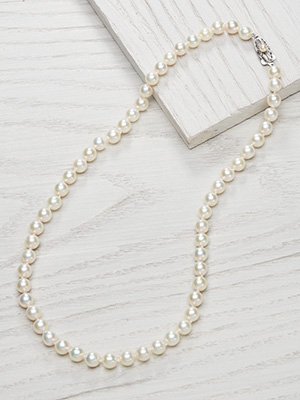FACET: History of Akoya Pearls
August 09, 2015The Akoya pearl belongs to the cultured saltwater family of pearls. That means that rather than growing naturally in the wild, Akoya pearls are grown by pearl farmers who "culture" them under tightly controlled conditions in hatcheries. This culturing allows them to be produced in the highly coveted uniform sizing and shape discerning pearl lovers demand in their strings of pearls. It is for this reason that Akoya pearls are often found in antique and vintage pearl necklaces and pearl bracelets..
The saltwater aspect of these pearls indicates that they grow inside oysters rather than mussels. Other members of the saltwater pearl family include Tahitian black pearls and South Sea pearls, but the Akoya pearl is the most common and best known of its class. The small Akoya oysters in which Akoya pearls form are cultivated from the coastal waters of Japan and China. They exhibit spectacular luster and exquisite coloration. Combine these qualities with their near perfect roundness and size, and it's easy to see why the Akoya pearl commands so much higher prices than its pearl competition.
Besides the obvious visual appeal, a few other factors make the Akoya an expensive pearl. First, harvesting an Akoya pearl, from start to finished product, takes anywhere from 10 to 18 months. What's more, Akoya oysters are stingy in their pearl production. Over the course of their lifespan, they generally produce two pearls max, and of those, a good portion do not survive to the harvesting stage. In contrast, freshwater oysters produce up to fifty pearls each time they are nucleated, a process which they can survive multiple times over.
In terms of color, Akoya pearls occur naturally in shades of cream and white. However, their nacre (lustrous overtone) can run the gamut from yellow to green to rose. It is this rosy overtone that is the rarest and therefore among the most sought after by Akoya pearl lovers.
The one drawback to Akoya pearls, depending on how one looks at the matter, is that they are among the smallest pearls in existence. Generally speaking, Akoya pearls range in size from 2 mm to 11 mm. But this is a small tradeoff given all the pearl's other selling points.
Return to blog home






 Facebook
Facebook Pinterest
Pinterest Instagram
Instagram